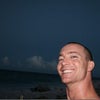Orville Slutzky, the pioneering ski resort owner of in the Catskills, who blasted out runs with dynamite and engineered one of the country’s first and most expansive snowmaking systems, on April 18. He was 96. He and his brother Izzy ran the resort until they were in their 80s.
At work, Orville had a reputation for watching employees on video screens from his office while barking orders out over a two-way radio and heading out onto the grounds to clean up trash. “People thought he was the janitor,” , a Hunter Mountain employee, told the .
He for helping locals find employment and immigrants new to town find housing.
as a first sergeant in the 1032nd Air Material Squadron of the 568th Air Service Group during World War II and spending time in India, Slutzky returned to Hunter to run a construction business with his brother. When tourism in Hunter in the 1950s, the brothers bought land around a mountain just outside town and hatched a plan to garner funding from New York City investors. The caveat? The buyers to call the resort Hunter Mountain Ski Bowl and include snowmaking.
They called New York Herald Tribune ski writer Denise McCluggage. “The man said did I know someone who wanted a mountain?” McCluggage told . “I knew someone who wanted a story that day.”
A Broadway group led by Oscar Hammerstein II to provide funding. The brothers began blasting, since the state said the area wouldn’t work for a ski area. “We were a general contracting firm building businesses, roads, schools, hospitals,” . “They said the mountain wasn’t suitable. We were a rocky hill. Blasting rock was no trouble for us. I don’t know how many thousands of pounds of dynamite we used—I wish I did.”
After the slopes were carved, winter came, the employees the snow machines, and “…the only thing that happened was ice was created on the trees,” Paul Pepe said in .
The mountain on January 9, 1960. Two years later, Hammerstein had financial troubles so the brothers took over the resort. , the resort has a multi-million dollar learning and entertainment center and 1,500 snow machines offer the slopes 100 percent coverage.
Over more than 50 years, Slutzky watched the clientele change as travel to areas out West picked up. “The skiers who were here 50 years ago were 20 years old,” he told magazine. “They’re 70 or 80 now.”
He also watched as the weather changed. “Mother Nature is an ardent adversary. She gives you a little snow today and washes it away tomorrow,” Slutzky told . “You’ve got to overcome Mother Nature and she’s no tiny beast. She’s a big beast.”
Many U.S. ski resorts dealing with shorter seasons, reduced snowfall, and warming temps have adopted a similar mentality. One study predicts that by 2040 more than half of the 103 ski resorts in the Northeast will not be able to maintain a 100-day season, and that—at least without a surge in —no resort in Connecticut or Massachusetts will be economically viable.
If someone told Slutzky his resort might have been included in that grim prediction, he likely would have had something to say. Consider to a reporter’s question about what a typical day was like for him at the resort. “I’m here from about 4:30 am until about 5:00 pm only seven days a week. When someone tells me it can’t be done, I work harder to prove they were wrong—like when New York State said: ‘Hunter Mountain’s just a rocky hill. You can’t do anything with it.'”
At the end of that , the reporter asked if he had any last words. “I always say: If you can’t get motivated, then get off at the ground floor.”
